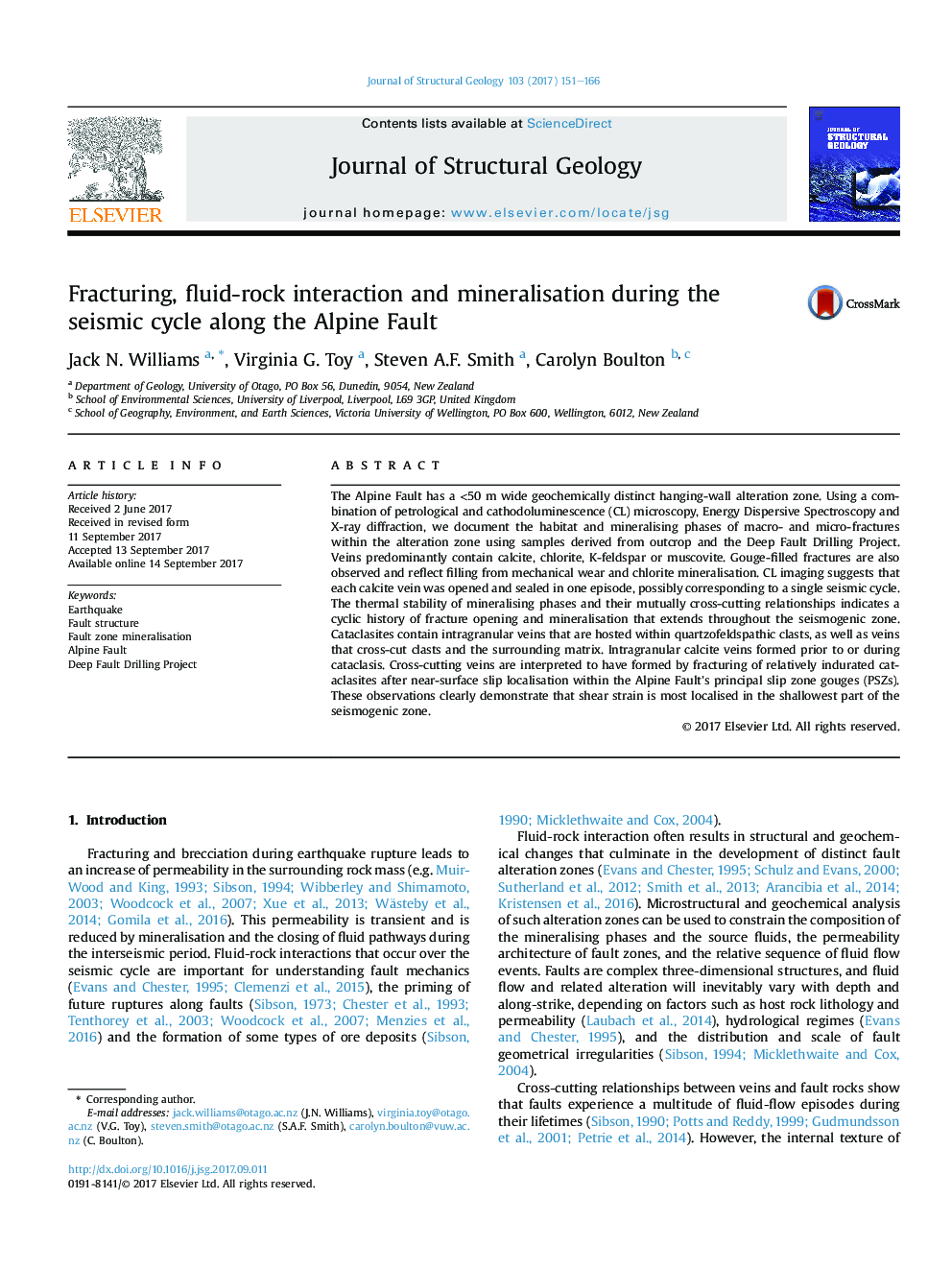| کد مقاله | کد نشریه | سال انتشار | مقاله انگلیسی | نسخه تمام متن |
|---|---|---|---|---|
| 5786268 | 1640477 | 2017 | 16 صفحه PDF | دانلود رایگان |
عنوان انگلیسی مقاله ISI
Fracturing, fluid-rock interaction and mineralisation during the seismic cycle along the Alpine Fault
ترجمه فارسی عنوان
شکسته شدن، متلاشی شدن و کانی سازی سیال-سنگ در طول دوره لرزه ای در طول گسل آلپ
دانلود مقاله + سفارش ترجمه
دانلود مقاله ISI انگلیسی
رایگان برای ایرانیان
موضوعات مرتبط
مهندسی و علوم پایه
علوم زمین و سیارات
زمین شناسی
چکیده انگلیسی
The Alpine Fault has a <50Â m wide geochemically distinct hanging-wall alteration zone. Using a combination of petrological and cathodoluminescence (CL) microscopy, Energy Dispersive Spectroscopy and X-ray diffraction, we document the habitat and mineralising phases of macro- and micro-fractures within the alteration zone using samples derived from outcrop and the Deep Fault Drilling Project. Veins predominantly contain calcite, chlorite, K-feldspar or muscovite. Gouge-filled fractures are also observed and reflect filling from mechanical wear and chlorite mineralisation. CL imaging suggests that each calcite vein was opened and sealed in one episode, possibly corresponding to a single seismic cycle. The thermal stability of mineralising phases and their mutually cross-cutting relationships indicates a cyclic history of fracture opening and mineralisation that extends throughout the seismogenic zone. Cataclasites contain intragranular veins that are hosted within quartzofeldspathic clasts, as well as veins that cross-cut clasts and the surrounding matrix. Intragranular calcite veins formed prior to or during cataclasis. Cross-cutting veins are interpreted to have formed by fracturing of relatively indurated cataclasites after near-surface slip localisation within the Alpine Fault's principal slip zone gouges (PSZs). These observations clearly demonstrate that shear strain is most localised in the shallowest part of the seismogenic zone.
ناشر
Database: Elsevier - ScienceDirect (ساینس دایرکت)
Journal: Journal of Structural Geology - Volume 103, October 2017, Pages 151-166
Journal: Journal of Structural Geology - Volume 103, October 2017, Pages 151-166
نویسندگان
Jack N. Williams, Virginia G. Toy, Steven A.F. Smith, Carolyn Boulton,
